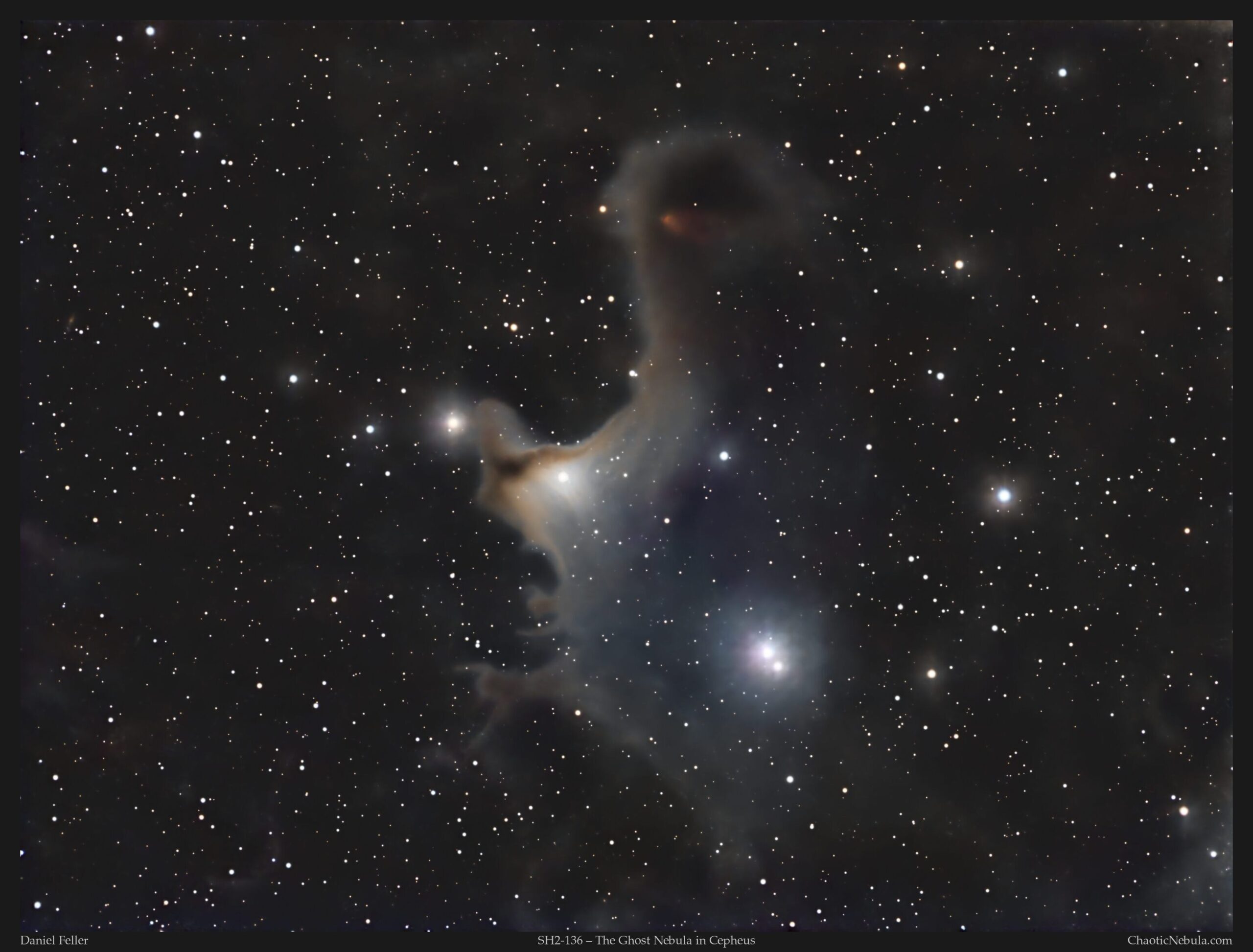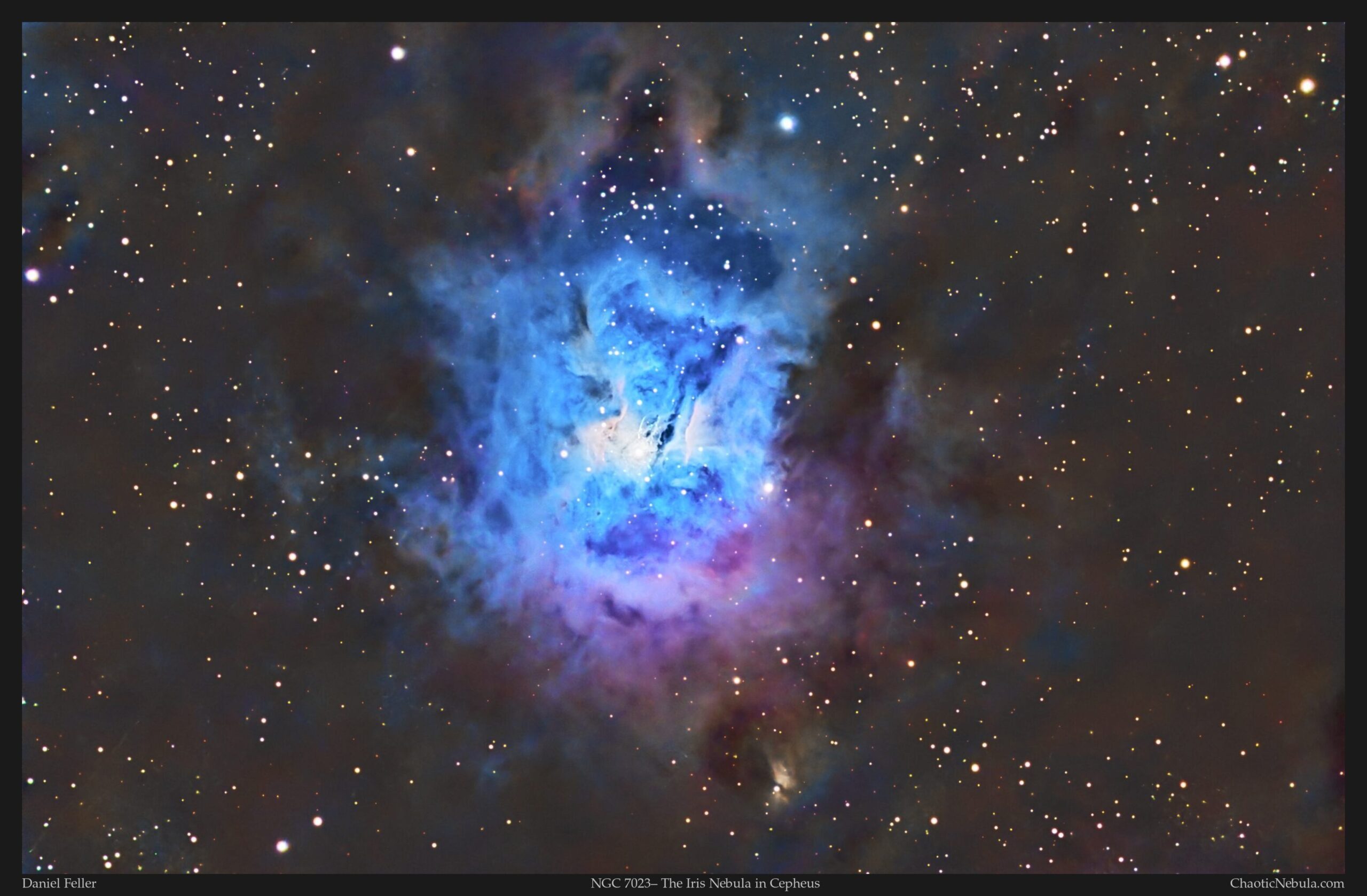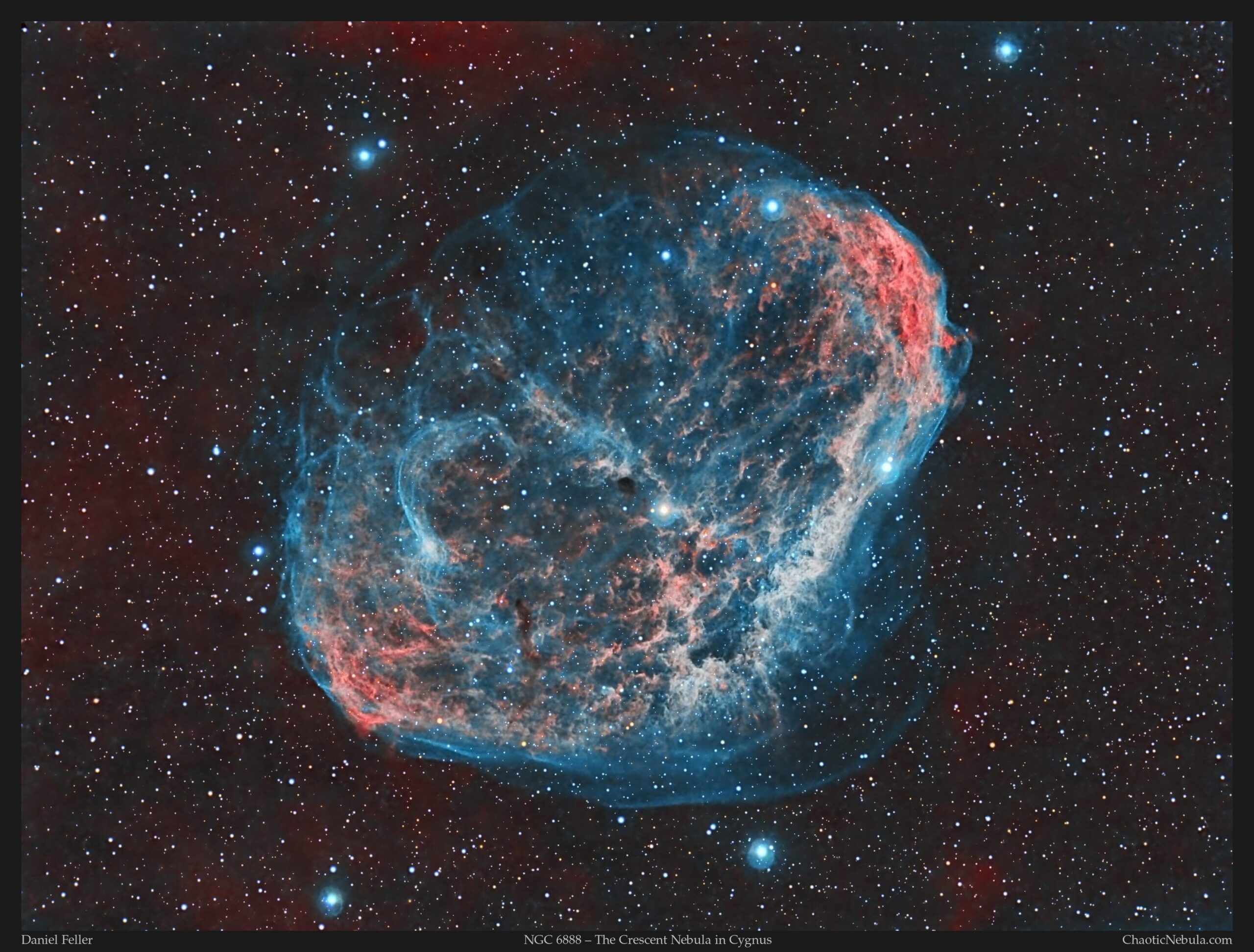SH2-136: The Ghost Nebula in Cepheus
Sh2-136: The Ghost Nebula is a hauntingly stunning reflection nebula located approximately 1,200 light-years away in the constellation Cepheus. This eerie formation earns its nickname from its spectral appearance created by wispy tendrils of interstellar dust illuminated by embedded young stars, giving it the illusion of ghostly figures drifting through space.
Unlike emission nebulae, which glow from ionized gases, the Ghost Nebula reflects the starlight of several young stellar objects buried within the dense cloud. The dust scatters the light in soft, muted tones, often appearing golden or brownish in color due to the nature of the surrounding material. These intricate dust structures are part of a dark molecular cloud known as LDN 1177, an active region of low-mass star formation.
(more…)


